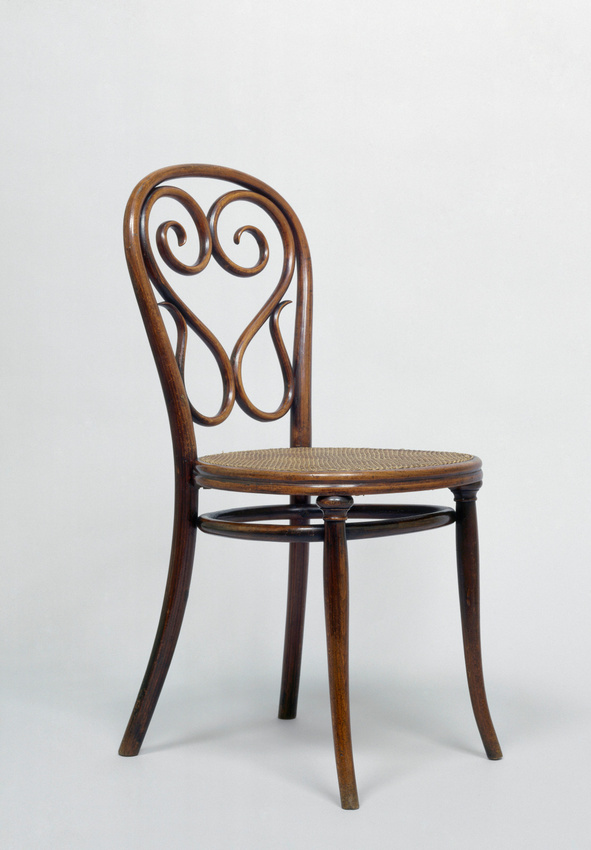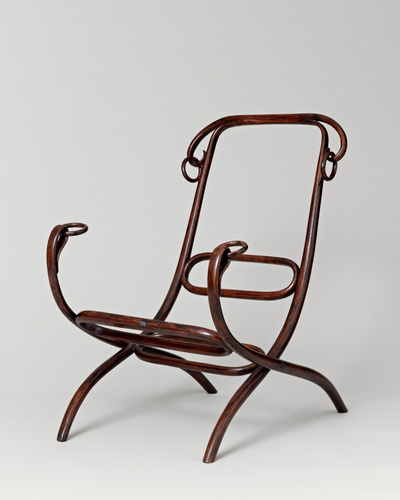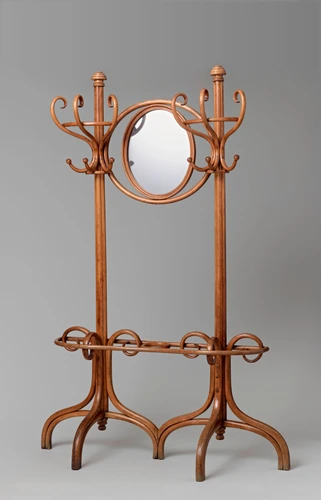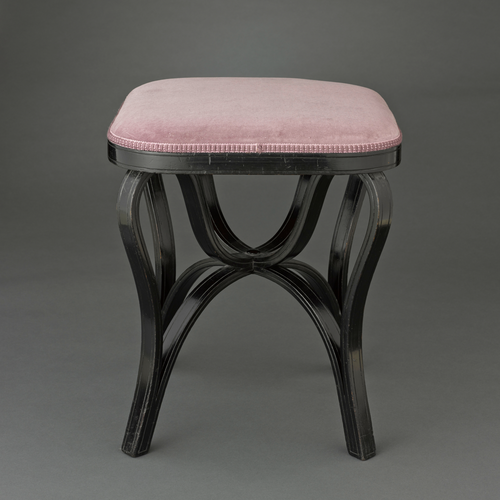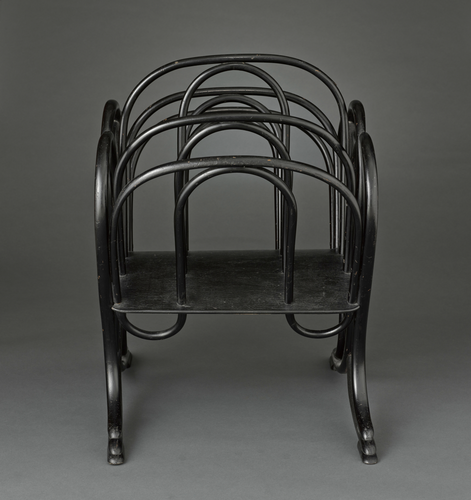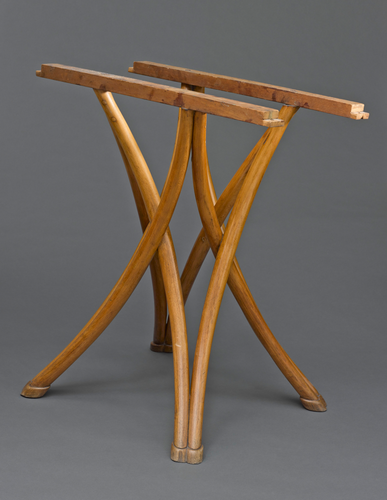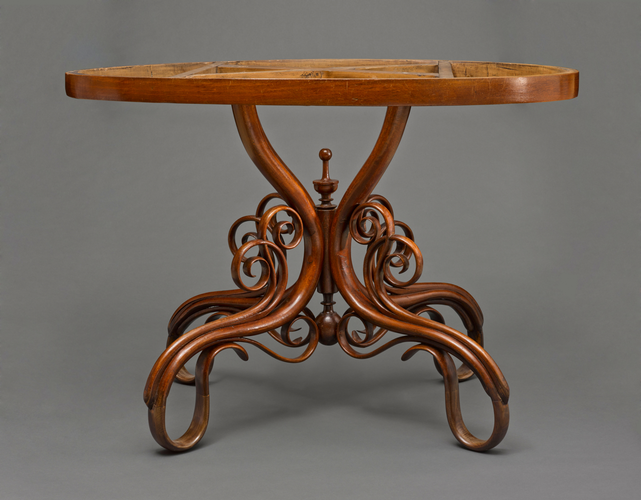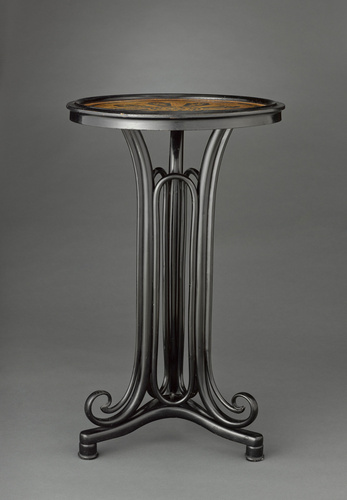Chaise n°4
This chair is made of beechwood laths steamed and bent into curved jigs then dried, sanded, and finally stained and varnished before being assembled with screws and bolts.
The procedure was invented in 1841 by Michael Thonet, who designed the final prototype for the Daum cafe in Vienna in 1849, featuring a back rest and back legs made from a single piece, a rounded cane or laminated seat, and added front legs.
Thonet organised the mass production of the separate pieces which were combined to make a large number of models. Forty-five million copies were made of his No. 14 bistro chair, designed in 1859, and production continued until 1903. After 1861, Gebrüder Thonet opened branches in all the European capitals.
In 1869, Thonet lost its monopoly: rival firms sprang up and copied the most popular models. J. & J. Kohn had its furniture designed by architects; Thonet reacted by extending its production to 1,200 different models. Production declined sharply with the First World War. The Thonet firm continues to innovate and still exists in Vienna today.
